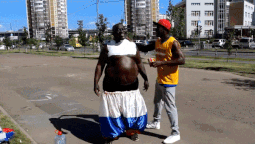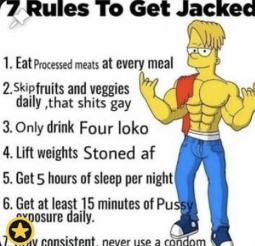
R: 0 / I: 0
>>975 105.74.1.104; >>992 65.25.82.69; >>1001 94.46.24.39; >>1002 5.173.200.3; >>1003 79.224.52.113; >>1005 160.164.242.32; >>1016 98.40.228.23; >>1052 98.40.228.23; >>944 80.167.201.120; >>946 38.250.129.217; >>947 109.252.66.224; >>948 109.252.66.224; >>954 217.27.114.229; >>1017 98.40.228.23; >>1018 67.198.58.214; >>1038 194.12.34.19; >>1039 70.59.198.205; >>1040 208.102.211.208; >>1061 174.170.123.130; >>1067 181.56.144.244; >>930 104.28.244.74; >>931 35.139.103.251; >>932 67.198.58.214; >>939 104.28.244.74; >>940 71.244.131.67; >>971 104.28.244.74; >>976 185.177.124.225; >>977 105.74.1.104; >>978 114.74.142.139; >>991 158.46.255.230; >>993 69.248.241.248; >>994 158.46.255.230; >>1007 91.105.176.249; >>1051 91.105.176.249; >>876 103.3.82.15; >>877 185.220.101.1; >>878 103.3.82.15; >>879 78.173.69.135; >>880 103.3.82.15; >>888 104.10.208.59; >>890 172.56.55.39; >>895 103.3.82.15; >>897 212.200.247.88; >>898 73.10.102.150; >>899 83.30.65.77; >>900 83.30.65.77; >>906 71.224.92.81; >>907 84.154.56.198; >>953 103.3.82.15; >>866 149.154.248.113; >>867 78.16.178.119; >>868 149.154.248.113; >>870 146.70.174.70; >>871 89.164.255.84; >>891 172.56.55.39; >>941 149.154.248.113; >>942 104.28.244.74; >>957 109.135.50.137; >>963 57.128.168.36; >>762 185.12.171.239; >>763 1.159.232.203; >>765 58.111.72.95; >>766 185.12.171.239; >>767 1.159.232.203; >>768 185.12.171.239; >>769 83.30.78.227; >>770 185.12.171.239; >>676 24.252.41.189; >>679 108.44.217.218; >>758 146.70.174.69; >>759 85.100.79.219; >>761 146.70.174.69; >>764 1.159.232.203; >>783 75.181.95.121; >>784 75.181.95.121; >>647 108.31.194.60; >>648 174.170.123.130; >>649 212.34.23.207; >>650 108.31.194.60; >>651 104.28.48.213; >>652 67.198.58.214; >>656 76.33.38.20; >>986 72.83.155.239; >>987 80.167.201.120; >>1009 176.167.210.34; >>1035 72.83.155.239; >>616 80.167.201.120; >>617 181.56.144.244; >>644 5.184.207.127; >>654 149.154.248.113; >>655 149.154.248.113; >>660 67.43.236.2; >>662 73.121.123.241; >>665 208.66.149.75; >>670 72.187.27.154; >>693 108.80.112.210; >>813 185.100.85.22; >>815 83.24.130.85; >>816 83.24.130.85; >>874 80.167.201.120; >>875 146.70.132.53; >>606 71.224.92.81; >>608 174.170.123.130; >>610 71.224.92.81; >>611 174.170.123.130; >>612 91.106.52.29; >>614 151.228.122.200; >>615 71.224.92.81; >>668 71.224.92.81; >>754 71.224.92.81; >>779 73.121.123.241; >>788 174.170.123.130; >>789 187.86.167.218; >>794 73.121.123.241; >>802 71.224.92.81; >>814 83.24.130.85; >>825 159.242.234.106; >>837 181.163.194.148; >>857 47.26.134.18; >>858 47.26.134.18; >>935 71.224.92.81; >>951 73.121.123.241; >>1034 47.26.134.18; >>487 172.58.123.53; >>517 181.56.144.244; >>623 73.121.123.241; >>637 174.52.118.16; >>780 75.181.95.121; >>797 181.163.194.148; >>375 98.40.228.23; >>376 98.40.228.23; >>391 142.126.166.119; >>392 66.66.78.213; >>402 181.56.144.244; >>454 185.177.124.225; >>469 114.74.132.80; >>476 185.177.124.220; >>480 37.159.46.107; >>482 51.146.239.65; >>486 141.156.176.25; >>505 174.203.99.125; >>798 181.163.194.148; >>901 37.204.70.185; >>912 98.111.138.15; >>915 98.40.228.23; >>918 98.111.138.15; >>919 67.198.58.214; >>922 98.40.228.23; >>274 181.56.144.244; >>277 83.87.193.226; >>336 181.56.144.244; >>345 67.198.58.214; >>401 181.56.144.244; >>420 71.231.65.96; >>456 78.145.169.230; >>470 81.96.22.89; >>471 83.30.61.138; >>472 181.56.144.244; >>473 181.56.144.244; >>484 73.121.123.241; >>485 141.156.176.25; >>571 89.206.20.117; >>961 82.167.242.72; >>154 24.115.193.25; >>157 24.115.193.25; >>162 35.139.103.251; >>184 24.115.193.25; >>211 24.115.193.25; >>220 24.115.193.25; >>224 24.115.193.25; >>329 24.115.193.25; >>333 91.231.25.163; >>338 24.115.193.25; >>386 97.113.112.52; >>387 97.113.112.52; >>509 24.115.193.25; >>512 86.174.190.162; >>513 86.174.190.162; >>514 24.115.193.25; >>603 24.115.193.25; >>683 24.115.193.25; >>688 62.74.26.37; >>820 24.115.193.25; >>1042 194.12.34.19; >>1045 142.255.87.68; >>1053 172.225.108.129; >>1059 46.134.69.248; >>1010 174.197.133.120; >>1011 68.66.114.199; >>1012 76.230.242.131; >>547 146.70.173.175;
>>975 105.74.1.104; >>992 65.25.82.69; >>1001 94.46.24.39; >>1002 5.173.200.3; >>1003 79.224.52.113; >>1005 160.164.242.32; >>1016 98.40.228.23; >>1052 98.40.228.23; >>944 80.167.201.120; >>946 38.250.129.217; >>947 109.252.66.224; >>948 109.252.66.224; >>954 217.27.114.229; >>1017 98.40.228.23; >>1018 67.198.58.214; >>1038 194.12.34.19; >>1039 70.59.198.205; >>1040 208.102.211.208; >>1061 174.170.123.130; >>1067 181.56.144.244; >>930 104.28.244.74; >>931 35.139.103.251; >>932 67.198.58.214; >>939 104.28.244.74; >>940 71.244.131.67; >>971 104.28.244.74; >>976 185.177.124.225; >>977 105.74.1.104; >>978 114.74.142.139; >>991 158.46.255.230; >>993 69.248.241.248; >>994 158.46.255.230; >>1007 91.105.176.249; >>1051 91.105.176.249; >>876 103.3.82.15; >>877 185.220.101.1; >>878 103.3.82.15; >>879 78.173.69.135; >>880 103.3.82.15; >>888 104.10.208.59; >>890 172.56.55.39; >>895 103.3.82.15; >>897 212.200.247.88; >>898 73.10.102.150; >>899 83.30.65.77; >>900 83.30.65.77; >>906 71.224.92.81; >>907 84.154.56.198; >>953 103.3.82.15; >>866 149.154.248.113; >>867 78.16.178.119; >>868 149.154.248.113; >>870 146.70.174.70; >>871 89.164.255.84; >>891 172.56.55.39; >>941 149.154.248.113; >>942 104.28.244.74; >>957 109.135.50.137; >>963 57.128.168.36; >>762 185.12.171.239; >>763 1.159.232.203; >>765 58.111.72.95; >>766 185.12.171.239; >>767 1.159.232.203; >>768 185.12.171.239; >>769 83.30.78.227; >>770 185.12.171.239; >>676 24.252.41.189; >>679 108.44.217.218; >>758 146.70.174.69; >>759 85.100.79.219; >>761 146.70.174.69; >>764 1.159.232.203; >>783 75.181.95.121; >>784 75.181.95.121; >>647 108.31.194.60; >>648 174.170.123.130; >>649 212.34.23.207; >>650 108.31.194.60; >>651 104.28.48.213; >>652 67.198.58.214; >>656 76.33.38.20; >>986 72.83.155.239; >>987 80.167.201.120; >>1009 176.167.210.34; >>1035 72.83.155.239; >>616 80.167.201.120; >>617 181.56.144.244; >>644 5.184.207.127; >>654 149.154.248.113; >>655 149.154.248.113; >>660 67.43.236.2; >>662 73.121.123.241; >>665 208.66.149.75; >>670 72.187.27.154; >>693 108.80.112.210; >>813 185.100.85.22; >>815 83.24.130.85; >>816 83.24.130.85; >>874 80.167.201.120; >>875 146.70.132.53; >>606 71.224.92.81; >>608 174.170.123.130; >>610 71.224.92.81; >>611 174.170.123.130; >>612 91.106.52.29; >>614 151.228.122.200; >>615 71.224.92.81; >>668 71.224.92.81; >>754 71.224.92.81; >>779 73.121.123.241; >>788 174.170.123.130; >>789 187.86.167.218; >>794 73.121.123.241; >>802 71.224.92.81; >>814 83.24.130.85; >>825 159.242.234.106; >>837 181.163.194.148; >>857 47.26.134.18; >>858 47.26.134.18; >>935 71.224.92.81; >>951 73.121.123.241; >>1034 47.26.134.18; >>487 172.58.123.53; >>517 181.56.144.244; >>623 73.121.123.241; >>637 174.52.118.16; >>780 75.181.95.121; >>797 181.163.194.148; >>375 98.40.228.23; >>376 98.40.228.23; >>391 142.126.166.119; >>392 66.66.78.213; >>402 181.56.144.244; >>454 185.177.124.225; >>469 114.74.132.80; >>476 185.177.124.220; >>480 37.159.46.107; >>482 51.146.239.65; >>486 141.156.176.25; >>505 174.203.99.125; >>798 181.163.194.148; >>901 37.204.70.185; >>912 98.111.138.15; >>915 98.40.228.23; >>918 98.111.138.15; >>919 67.198.58.214; >>922 98.40.228.23; >>274 181.56.144.244; >>277 83.87.193.226; >>336 181.56.144.244; >>345 67.198.58.214; >>401 181.56.144.244; >>420 71.231.65.96; >>456 78.145.169.230; >>470 81.96.22.89; >>471 83.30.61.138; >>472 181.56.144.244; >>473 181.56.144.244; >>484 73.121.123.241; >>485 141.156.176.25; >>571 89.206.20.117; >>961 82.167.242.72; >>154 24.115.193.25; >>157 24.115.193.25; >>162 35.139.103.251; >>184 24.115.193.25; >>211 24.115.193.25; >>220 24.115.193.25; >>224 24.115.193.25; >>329 24.115.193.25; >>333 91.231.25.163; >>338 24.115.193.25; >>386 97.113.112.52; >>387 97.113.112.52; >>509 24.115.193.25; >>512 86.174.190.162; >>513 86.174.190.162; >>514 24.115.193.25; >>603 24.115.193.25; >>683 24.115.193.25; >>688 62.74.26.37; >>820 24.115.193.25; >>1042 194.12.34.19; >>1045 142.255.87.68; >>1053 172.225.108.129; >>1059 46.134.69.248; >>1010 174.197.133.120; >>1011 68.66.114.199; >>1012 76.230.242.131; >>547 146.70.173.175;

R: 9 / I: 4
easypeasymethod , porn addiction curing
How to win friends and influence people , Social skills book
Deep Work
Lolita
The Art of Manliness: Classic Skills and Manners for the Modern Man
American Psycho because the novel might as well be a guide to mans grooming
The C programming language
books
Books to read:easypeasymethod , porn addiction curing
How to win friends and influence people , Social skills book
Deep Work
Lolita
The Art of Manliness: Classic Skills and Manners for the Modern Man
American Psycho because the novel might as well be a guide to mans grooming
The C programming language

R: 7 / I: 6
I used to lurk on imageboards all the time 10+ years ago, then intermittedly around 2015-2017, and I was doing so well not using them until I discovered the 'rty and it all fell apart.
I've been here 12+ hours a day every day since I found the site, mostly because it constantly makes fun of everything I hated about chans and "board culture".
How to stop?
I used to lurk on imageboards all the time 10+ years ago, then intermittedly around 2015-2017, and I was doing so well not using them until I discovered the 'rty and it all fell apart.
I've been here 12+ hours a day every day since I found the site, mostly because it constantly makes fun of everything I hated about chans and "board culture".
How to stop?

R: 14 / I: 4
https://www.youtube.com/channel/UCnRVL1-HJnXWB_Xi2dAoTcg
The GOD of anti-aging /health/
Opinions on 'ryan?https://www.youtube.com/channel/UCnRVL1-HJnXWB_Xi2dAoTcg

R: 4 / I: 0
Protein 'slop on the 'log
>1 cup of vanilla greek yogurt (13-25g protein)
>1 scoop ON Protein Whey Vanilla Ice Cream flavor (24g protein)
>small splash of water or low fat milk for consistency
The consistency is like custard and you could probably mix in your daily creatine if you wanted. I'm gonna try it next time with frozen berries. Hitting protein goals is a pain in the ass so I am sharing this breakfast/dessert hack with 'teens.
Protein 'slop on the 'log
>1 cup of vanilla greek yogurt (13-25g protein)
>1 scoop ON Protein Whey Vanilla Ice Cream flavor (24g protein)
>small splash of water or low fat milk for consistency
The consistency is like custard and you could probably mix in your daily creatine if you wanted. I'm gonna try it next time with frozen berries. Hitting protein goals is a pain in the ass so I am sharing this breakfast/dessert hack with 'teens.

R: 5 / I: 1
https://www.youtube.com/watch?v=5YV_iKnzDRg
https://www.youtube.com/@DrEricBergDC
https://www.youtube.com/@LTPottenger
https://www.youtube.com/@chrismasterjohn
https://rumble.com/v2djhm4-dr-lee-merritt-presentation-the-parasite-paradigm-a.k.a-the-parasite-protoc.html
https://www.youtube.com/@KenDBerryMD
https://www.youtube.com/@EONutrition
https://www.youtube.com/@EvilFoodSupply
https://www.youtube.com/@DrBradStanfield
https://www.youtube.com/@ThomasDeLauerOfficial
Health e-celebs
ITT: We post the best /health/ 'tubershttps://www.youtube.com/watch?v=5YV_iKnzDRg
https://www.youtube.com/@DrEricBergDC
https://www.youtube.com/@LTPottenger
https://www.youtube.com/@chrismasterjohn
https://rumble.com/v2djhm4-dr-lee-merritt-presentation-the-parasite-paradigm-a.k.a-the-parasite-protoc.html
https://www.youtube.com/@KenDBerryMD
https://www.youtube.com/@EONutrition
https://www.youtube.com/@EvilFoodSupply
https://www.youtube.com/@DrBradStanfield
https://www.youtube.com/@ThomasDeLauerOfficial

R: 4 / I: 2
ARRRGHHHHH
OFFICIAL /fit/ REFUGE THREAD FELLOW CREATINE USERS AND ROID FAGGOTS
WITH OUR HOME TAKEN DOWN, SOME OF YOU MIGHT BE HERE
POST YOUR LIFTS AND MUSIC YOU LISTEN TIO WHEN DOING SAID LIFTS
YOUVE DONE YOUR GODDAMN SETS RIGHT BRAHS
TALE YOUR FUCKING OROTEIN
TWO SCOOPS COME ONNNNNNNNNNNNNNN
WGMI BRAHS GO NOW
ARRRGHHHHH
OFFICIAL /fit/ REFUGE THREAD FELLOW CREATINE USERS AND ROID FAGGOTS
WITH OUR HOME TAKEN DOWN, SOME OF YOU MIGHT BE HERE
POST YOUR LIFTS AND MUSIC YOU LISTEN TIO WHEN DOING SAID LIFTS
YOUVE DONE YOUR GODDAMN SETS RIGHT BRAHS
TALE YOUR FUCKING OROTEIN
TWO SCOOPS COME ONNNNNNNNNNNNNNN
WGMI BRAHS GO NOW

R: 3 / I: 1
anyone else doesn't get energy from energy drinks?
I've been chugging one a day (i really like the taste) since forever, but even then it didn't really get me less tired, nowadays i feel like i actually get sleepier from drinking them, i can shotgun a whole can and fall sleep like a fucking baby in minutes
R: 3 / I: 0
this was originally a much smaller response to >>461 but it got too big and decided it may be more valuable to flesh out on its own. or not, I'm not very concise unfortunately.
MID DISTANCE TRACK
>don't have the genetics of a sprinter?
>can't stand super long distance runs?
>not very coordinated?
>lower body stronger than upper body?
>does your school have a running club or track program?
>do you need some friends?
>track could be really good for you if actually want to do it
DECIDING:
do you really want to do this? You HAVE to run everyday. Every day's workout has a purpose. You can't get enough training in if you just do every other. Sorry. It's a commitment. Running with others to keep you accountable and socialize will help immensely. It's actually the reason most people do it. Even then, it's up to you. When by yourself, you succeed in planning ahead with this question: "WHEN am I getting my run in tomorrow?????" And you THRIVE by making it the same time everyday. (morning recommended for adults esp, you are groggy, it's cool out, might as well) You need a 1 hour block to start. 2 if you progress past 3 months. That said if your run (actual workout time) is less than 21 minutes don't bother that day. It counts as a failure. If you follow my instructions you will improve assuming you don't get injured. I promise. It's the reason I stuck with it. It will NOT be for nothing it is impossible not to improve unless you are training for something else, have a medical condition, or both: you are female (X). (females can follow my advice but no guarantees.)
BEFORE:
You want shoes from a running store, minimum $80/pair, minimum swap every 6 months according to track dogma. they will let you run around the block with them to see how they feel. (i have alternative schizo theories but we'll ignore that and just say never run on concrete and avoid roads as much as possible). never wear spikes unless racing, or leading up to a race, or speed workouts in spring. have shin splints? Brooks Glycerins are all i got for you, sorry. Before workouts, minimum eating wait time is 6-4 hours after protein, 4-2 after carbs. can't remember exactly sorry YMMV. You need carbs to run and should carb load the night before races. No fast food, but you probably already have that handled.
STARTING:
Keep mileage low when you start. If you haven't run seriously recently/at all before, start with 3 mile distance run/daily mileage to base the rest of your numbers off of. First two weeks, not even tired when finished with your workout. Use this time to learn to like it. For at least the first two weeks every day is a steady 3 mile distance run. Use this time to see if your schedule works. You should be tired and breathing heavy by months' end but not gasping/pushing yourself. It is entirely building your muscles, joints and bones to take it. Getting injured is really easy. If you don't injure yourself and you feel like you are ready, gradually adjust up to 5 miles over the course of 1-3 months.
The importance of summer training leading into cross country season can NOT be understated. Cross country makes a massive difference for middies. The entire summer and fall is just investing and then winter is interval hell time and then spring is when you cash out and start doing speed and clocking PBs. The time to start running during the year is coincidentally actually right now for cross country if you are in school.
Sign up before it's too late to submit a physical. Running with others is the reason most people stick with it rather than quitting. It changes the entire experience. It makes it easier. It may change your entire identity. You're an "athlete"? Girls like that. I have no idea how but I ended up with a hot gf for a bit, and found my way into a national race by the time HS was over. If you don't have AP/honors classes or a job after school, go do a sport, even if you end up in mid distance track and field.
SCHEDULE:
MON - trackwork/interval workout run (hard) - (crown workouts) (400 repeats) (other incarnations of hell)
TUES- 'distance' run (easy)
WED - v02 max training run (hard) - (basically do a 5k that ends in race pace iirc)
THURS - 'distance' rhythm miles/spice it up chuddy (easy) - (distance run that starts easy but gets faster each mile, 3 min break between each, don't embarrass yourself and PB in practice doing this) (fartlek - lol random XD hippy running)
FRI - speed interval workout run (depends) - (like mondays but shorter intervals and shorter breaks, should scale with season) (maybe just do another monday during summer and fall honestly)
SAT - Long run (hard) - (1.5 times daily mileage in one smooth go) (if you do not suffer when your mileage gets serious, congrats you are a true "long" distance runner)
SUN - day off/jog/run with athletic qts followed by muscle rolling session(v easy)
WORKOUT NOTES:
Remember how I said start with 3 mile distance days? (NOT LONG RUN, DISTANCE DAYS) All your workouts except long run and day off should add up to 3 miles if you are doing 3 mile distance days. Long run is about 1.5 times your distance day. You can bend it based on season, preference and circumstance. As you increase your distance day, your daily mileage goes up with it. Warm up and cool down jogs don't count towards mileage and should be about 1/2 mile each. Stretching and core work is a good idea. When running you should be paying attention to some things. These are the following sections.
FORM:
Once you get really started, you should constantly be feeling out your form when running. Shoulders arms and hands should be relaxed, down. Core/torso stable not moving, upright unless on a hill, then leaned forward uphill. Arms swing behind torso elbows to hands at 90 degrees for distance, tighter in for faster speed, triceps never pass in front of NOR across your chest. Forward and back only. Leg strikes down straight under you, ball of foot/toe makes contact, pushes out behind, lifts after near full extension, then (very important) the HEEL COMES IN TO YOUR BUTT ON A STRAIGHT LINE FROM LAST POINT OF CONTACT ON GROUND ESPECIALLY AT HIGH SPEED. To repeat; your foot after being on the ground comes UP TOWARD YOUR BUTT, AND PULLS FORWARD THROUGH WHILE STAYING CLOSE TO YOUR BUTT. When it can't come any further your thigh takes over and moves your whole leg forward so your knee comes UP to the point where your foot comes down straight under your hips again. Changing your form ALWAYS feels weird. It's hard to be self aware. When you are tired, check your form. It needs to be corrected the more tired you get. You will be sore. But if you feel a constant pain that is making you change your form, chances are you are injured. Basically, you need to take time off to heal. Sometimes you can do elliptical or water running as a stopgap. Don't do stationary/biking. Your thighs will become stronger than your calves and overload them. Very bad. To avoid injury use PRICE after workouts. Heat in the morning/before workouts. Cold after/before bed. More stretching. Better form. Core workouts. Work out the weird "little" muscles.
NOTE: ABSOLUTELY NO LYING DOWN/SITTING BETWEEN WORKOUT INTERVALS. Bent over with hands on your knees should be STRONGLY discouraged but what are you gonna do sometimes. Not allowed first month, a sign you're either going too hard or way undisciplined. Stretching can be ok. Moving stretches preferable. Very light jogging/walking are ideal. Hands on your head and deep slow breathing is best to alleviate side stitches while getting sweet sweet oxygen. After 3 months and you start doing HARD workouts some people vomit. (sprinters hue hue) Some don't. I never did it just depends on the person. Almost blacked out at the end of a race tho.
BREATHING:
NO MUSIC WHEN RUNNING 100% SERIOUS UNCLE ADOLF WOULD FROWN ON YOU. Sunday music is…is…..Swarthy? Part of the reason is that it messes up your breath to footstrike pattern. It becomes inconsistent which is very bad.
NOTE: Don't worry about breathing until you start pushing yourself a few weeks in. At first it will make you uncomfortable to manually breath and may even make you winded for a workout or two because your not used to it. Don't kill yourself, gradually introduce it. It becomes second nature pretty quick.
Basically, you can measure your breath intakes and outakes by your footstrikes. 3 in 2 out is pretty common once you get going. No need for it on warmups or the beginning of the workout because you have plenty of oxygen. Always intake in for longer than out. This is how you keep oxygen in your lungs. Not super important, but try to keep things odd. So 4+3=7 3+2=5 2+1=3 are good. ODD. Technically you can push the difference once you get better so like 3+1 or 5+2 but I've never done this. The evens are ok short term but don't go 1+1 or shorter for more than a 100 meter final push, it is hyperventilation. The goal of running is breathing deeper and more evenly.
BREATHING SIDE NOTE: SIDE STITCHES
Side stitches are just diaphragm cramps just like any other muscle cramp. If you get them you were breathing too fast and shallow or inconsistent. Slow and deep is always better. As this muscle gets stronger, you will have them less often. After a year, they're usually gone forever. Train with this in mind. Don't knock yourself out to breath slow though that's retarded just breath faster once you "have to". You'll know. If you have to keep going during a stitch in a race, breath deeper, and fuckin pray. If in training, slow your pace so you can go slow and deep until the stitch dissolves. Hands on your head helps. If you have to slow to a jog to get your hands on your head sometimes that is the best solution.
PACING:
The whole idea of track is every split should be the same in a race. Constant speed. In workouts, splits will be organized so they get FASTER as the workout progresses. 3rd quarter of a race is the hardest. Home stretch and beginning is easiest. Workouts typically are the same. It is physically harder to lead the pack and even more so to run by yourself. Psychology is an insanely huge factor in running. Chances are you will end up being friends with the people on the team who run a similar time as you, because your workouts are the same. Your splits should ideally be even or a steady increase not all over the place. You'll get it in time.
{{Spoiler|if you do mid distance long and serious enough your thighs lean and bulk simultaneously}}
S-sorry for the reddit blog…I don't think I missed anything general but who knows. I can cover injuries and race strategy a little more, feel free to ask other things too if I ever find this thread again. It's late.
Advisor General/Track
This thread is for the purpose of informing people how to do your sport/workout/job. Anything that requires a regimen or special advice. Think of it like /SIG/ but the teacher is talking? Reverse Requests? If you have experience or knowledge to offer, do it here. It can be about anything that requires special knowledge not just physical strength, but fitness is universal so… I used to be an academic in school, but I was forced to do track in HS, and had a fucking top tier coach. I ended up doing it year round for 4 years voluntarily. As an adult I can't really do it right now but one day I will go back to it.this was originally a much smaller response to >>461 but it got too big and decided it may be more valuable to flesh out on its own. or not, I'm not very concise unfortunately.
MID DISTANCE TRACK
>don't have the genetics of a sprinter?
>can't stand super long distance runs?
>not very coordinated?
>lower body stronger than upper body?
>does your school have a running club or track program?
>do you need some friends?
>track could be really good for you if actually want to do it
DECIDING:
do you really want to do this? You HAVE to run everyday. Every day's workout has a purpose. You can't get enough training in if you just do every other. Sorry. It's a commitment. Running with others to keep you accountable and socialize will help immensely. It's actually the reason most people do it. Even then, it's up to you. When by yourself, you succeed in planning ahead with this question: "WHEN am I getting my run in tomorrow?????" And you THRIVE by making it the same time everyday. (morning recommended for adults esp, you are groggy, it's cool out, might as well) You need a 1 hour block to start. 2 if you progress past 3 months. That said if your run (actual workout time) is less than 21 minutes don't bother that day. It counts as a failure. If you follow my instructions you will improve assuming you don't get injured. I promise. It's the reason I stuck with it. It will NOT be for nothing it is impossible not to improve unless you are training for something else, have a medical condition, or both: you are female (X). (females can follow my advice but no guarantees.)
BEFORE:
You want shoes from a running store, minimum $80/pair, minimum swap every 6 months according to track dogma. they will let you run around the block with them to see how they feel. (i have alternative schizo theories but we'll ignore that and just say never run on concrete and avoid roads as much as possible). never wear spikes unless racing, or leading up to a race, or speed workouts in spring. have shin splints? Brooks Glycerins are all i got for you, sorry. Before workouts, minimum eating wait time is 6-4 hours after protein, 4-2 after carbs. can't remember exactly sorry YMMV. You need carbs to run and should carb load the night before races. No fast food, but you probably already have that handled.
STARTING:
Keep mileage low when you start. If you haven't run seriously recently/at all before, start with 3 mile distance run/daily mileage to base the rest of your numbers off of. First two weeks, not even tired when finished with your workout. Use this time to learn to like it. For at least the first two weeks every day is a steady 3 mile distance run. Use this time to see if your schedule works. You should be tired and breathing heavy by months' end but not gasping/pushing yourself. It is entirely building your muscles, joints and bones to take it. Getting injured is really easy. If you don't injure yourself and you feel like you are ready, gradually adjust up to 5 miles over the course of 1-3 months.
The importance of summer training leading into cross country season can NOT be understated. Cross country makes a massive difference for middies. The entire summer and fall is just investing and then winter is interval hell time and then spring is when you cash out and start doing speed and clocking PBs. The time to start running during the year is coincidentally actually right now for cross country if you are in school.
Sign up before it's too late to submit a physical. Running with others is the reason most people stick with it rather than quitting. It changes the entire experience. It makes it easier. It may change your entire identity. You're an "athlete"? Girls like that. I have no idea how but I ended up with a hot gf for a bit, and found my way into a national race by the time HS was over. If you don't have AP/honors classes or a job after school, go do a sport, even if you end up in mid distance track and field.
SCHEDULE:
MON - trackwork/interval workout run (hard) - (crown workouts) (400 repeats) (other incarnations of hell)
TUES- 'distance' run (easy)
WED - v02 max training run (hard) - (basically do a 5k that ends in race pace iirc)
THURS - 'distance' rhythm miles/spice it up chuddy (easy) - (distance run that starts easy but gets faster each mile, 3 min break between each, don't embarrass yourself and PB in practice doing this) (fartlek - lol random XD hippy running)
FRI - speed interval workout run (depends) - (like mondays but shorter intervals and shorter breaks, should scale with season) (maybe just do another monday during summer and fall honestly)
SAT - Long run (hard) - (1.5 times daily mileage in one smooth go) (if you do not suffer when your mileage gets serious, congrats you are a true "long" distance runner)
SUN - day off/jog/run with athletic qts followed by muscle rolling session(v easy)
WORKOUT NOTES:
Remember how I said start with 3 mile distance days? (NOT LONG RUN, DISTANCE DAYS) All your workouts except long run and day off should add up to 3 miles if you are doing 3 mile distance days. Long run is about 1.5 times your distance day. You can bend it based on season, preference and circumstance. As you increase your distance day, your daily mileage goes up with it. Warm up and cool down jogs don't count towards mileage and should be about 1/2 mile each. Stretching and core work is a good idea. When running you should be paying attention to some things. These are the following sections.
FORM:
Once you get really started, you should constantly be feeling out your form when running. Shoulders arms and hands should be relaxed, down. Core/torso stable not moving, upright unless on a hill, then leaned forward uphill. Arms swing behind torso elbows to hands at 90 degrees for distance, tighter in for faster speed, triceps never pass in front of NOR across your chest. Forward and back only. Leg strikes down straight under you, ball of foot/toe makes contact, pushes out behind, lifts after near full extension, then (very important) the HEEL COMES IN TO YOUR BUTT ON A STRAIGHT LINE FROM LAST POINT OF CONTACT ON GROUND ESPECIALLY AT HIGH SPEED. To repeat; your foot after being on the ground comes UP TOWARD YOUR BUTT, AND PULLS FORWARD THROUGH WHILE STAYING CLOSE TO YOUR BUTT. When it can't come any further your thigh takes over and moves your whole leg forward so your knee comes UP to the point where your foot comes down straight under your hips again. Changing your form ALWAYS feels weird. It's hard to be self aware. When you are tired, check your form. It needs to be corrected the more tired you get. You will be sore. But if you feel a constant pain that is making you change your form, chances are you are injured. Basically, you need to take time off to heal. Sometimes you can do elliptical or water running as a stopgap. Don't do stationary/biking. Your thighs will become stronger than your calves and overload them. Very bad. To avoid injury use PRICE after workouts. Heat in the morning/before workouts. Cold after/before bed. More stretching. Better form. Core workouts. Work out the weird "little" muscles.
NOTE: ABSOLUTELY NO LYING DOWN/SITTING BETWEEN WORKOUT INTERVALS. Bent over with hands on your knees should be STRONGLY discouraged but what are you gonna do sometimes. Not allowed first month, a sign you're either going too hard or way undisciplined. Stretching can be ok. Moving stretches preferable. Very light jogging/walking are ideal. Hands on your head and deep slow breathing is best to alleviate side stitches while getting sweet sweet oxygen. After 3 months and you start doing HARD workouts some people vomit. (sprinters hue hue) Some don't. I never did it just depends on the person. Almost blacked out at the end of a race tho.
BREATHING:
NO MUSIC WHEN RUNNING 100% SERIOUS UNCLE ADOLF WOULD FROWN ON YOU. Sunday music is…is…..Swarthy? Part of the reason is that it messes up your breath to footstrike pattern. It becomes inconsistent which is very bad.
NOTE: Don't worry about breathing until you start pushing yourself a few weeks in. At first it will make you uncomfortable to manually breath and may even make you winded for a workout or two because your not used to it. Don't kill yourself, gradually introduce it. It becomes second nature pretty quick.
Basically, you can measure your breath intakes and outakes by your footstrikes. 3 in 2 out is pretty common once you get going. No need for it on warmups or the beginning of the workout because you have plenty of oxygen. Always intake in for longer than out. This is how you keep oxygen in your lungs. Not super important, but try to keep things odd. So 4+3=7 3+2=5 2+1=3 are good. ODD. Technically you can push the difference once you get better so like 3+1 or 5+2 but I've never done this. The evens are ok short term but don't go 1+1 or shorter for more than a 100 meter final push, it is hyperventilation. The goal of running is breathing deeper and more evenly.
BREATHING SIDE NOTE: SIDE STITCHES
Side stitches are just diaphragm cramps just like any other muscle cramp. If you get them you were breathing too fast and shallow or inconsistent. Slow and deep is always better. As this muscle gets stronger, you will have them less often. After a year, they're usually gone forever. Train with this in mind. Don't knock yourself out to breath slow though that's retarded just breath faster once you "have to". You'll know. If you have to keep going during a stitch in a race, breath deeper, and fuckin pray. If in training, slow your pace so you can go slow and deep until the stitch dissolves. Hands on your head helps. If you have to slow to a jog to get your hands on your head sometimes that is the best solution.
PACING:
The whole idea of track is every split should be the same in a race. Constant speed. In workouts, splits will be organized so they get FASTER as the workout progresses. 3rd quarter of a race is the hardest. Home stretch and beginning is easiest. Workouts typically are the same. It is physically harder to lead the pack and even more so to run by yourself. Psychology is an insanely huge factor in running. Chances are you will end up being friends with the people on the team who run a similar time as you, because your workouts are the same. Your splits should ideally be even or a steady increase not all over the place. You'll get it in time.
{{Spoiler|if you do mid distance long and serious enough your thighs lean and bulk simultaneously}}
S-sorry for the reddit blog…I don't think I missed anything general but who knows. I can cover injuries and race strategy a little more, feel free to ask other things too if I ever find this thread again. It's late.

R: 4 / I: 2
Some advice?
In the last two years I have changed radically, both in my eating habits and therefore also in my body: I eat junk food once every 4-5 months, I stopped drinking barley for 3 months and replaced it with milk and sometimes a week I do a little jump rope (no, the jump is of the legs and not the neck, I'm not trans) or a couple of hours of slow jogging in some park. Compared to me 1 year ago, I've lost a lot of weight and some muscles are starting to appear slightly on my arms (photo from my grandmother's bathroom). Since I recently bought a couple of weights and since I literally have an Aryan face (soyjak below) should I train more to lose weight and make me more muscles?






















































































































































